The Holy Land & Petra
The Tour Itinerary:
This morning we will enter the Old City through St. Stephen’s Gate and visit the Church of St. Anne, the Pool of Bethesda, the Chapel of Flagellation and the Arch of the “Ecce Homo”. We will then follow the Via Dolorosa (Way of the Cross) to the Church of the Holy Sepulchre to visit Golgotha and the Tomb of Our Risen Savior. This afternoon we will view from the outside the Temple Area of the Old City featuring the Dome of the Rock and el‐Aqsa Mosque and visit the Wailing Wall which is the holiest shrine in the world for Jews. We will next proceed to Mt. Zion to visit the Upper Room, which was the location of the Last Supper, Dormition Abbey, where Mary “fell into eternal sleep”, and St. Peter in Gallicantu, where Peter denied Jesus three times before the rooster crowed. This evening we will enjoy a special Middle Eastern Dinner party with drinks, coffee and tea.
We departed our hotel around 8:00 and went to St. Stephen's Gate (picture at right) to gain entrance to Old Jerusalem. This gate is also known as the Sheep Gate since sheep were brought through it so they could be
Day Six: Jerusalem Again
November 12, 2016
|
Saturday, November 12
The Tour Itinerary:
This morning we will enter the Old City through St. Stephen’s Gate and visit the Church of St. Anne, the Pool of Bethesda, the Chapel of Flagellation and the Arch of the “Ecce Homo”. We will then follow the Via Dolorosa (Way of the Cross) to the Church of the Holy Sepulchre to visit Golgotha and the Tomb of Our Risen Savior. This afternoon we will view from the outside the Temple Area of the Old City featuring the Dome of the Rock and el‐Aqsa Mosque and visit the Wailing Wall which is the holiest shrine in the world for Jews. We will next proceed to Mt. Zion to visit the Upper Room, which was the location of the Last Supper, Dormition Abbey, where Mary “fell into eternal sleep”, and St. Peter in Gallicantu, where Peter denied Jesus three times before the rooster crowed. This evening we will enjoy a special Middle Eastern Dinner party with drinks, coffee and tea.
We departed our hotel around 8:00 and went to St. Stephen's Gate (picture at right) to gain entrance to Old Jerusalem. This gate is also known as the Sheep Gate since sheep were brought through it so they could be

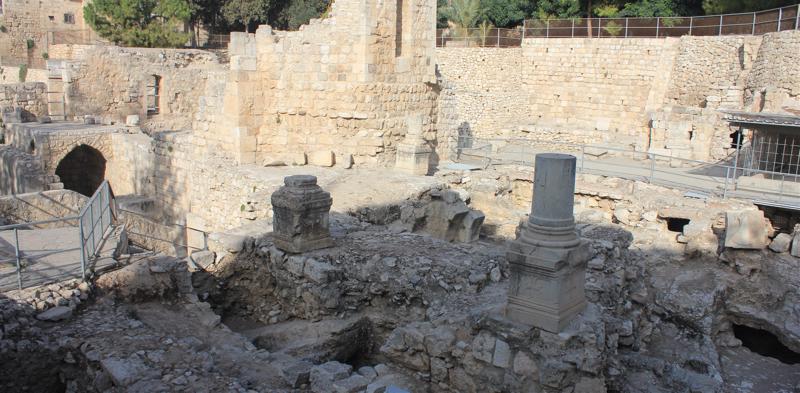
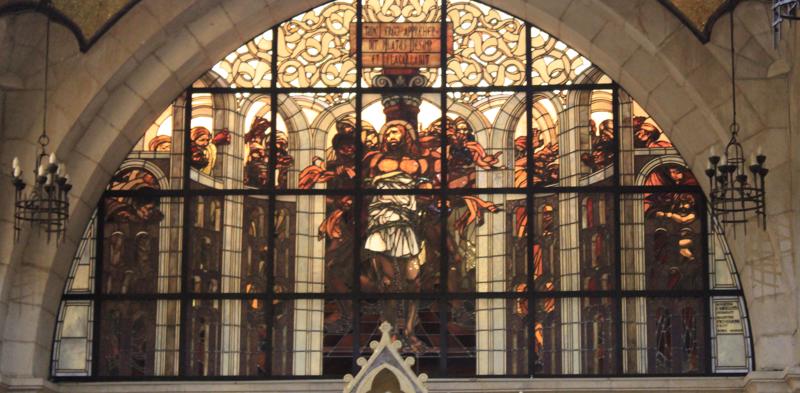

washed prior to being sacrificed in the Temple. Our first stop once in the City was the ruins of the Pool of Bethesda (top picture on the adjacent page). It was here that Jesus healed the man who had been a paralytic for 38 years.
We peaked into the Church of St. Anne and then moved to the Chapel of Flagellation where we celebrated Mass. The chapel is small with a comfortable feel and is nicely finished especially the stained glass window behind the altar (middle picture on the adjacent page). The Gospel reading was the one in which Pilate questions Jesus and concludes that He is guilty of nothing but has Jesus flogged to appease the members of the Sanhedrin.
When Mass was done we walked to the start of the Via Dolorosa, the Stations of the Cross. Rami explained that several of the Stations are not described in the Gospels but were pulled together in the mid-19th century by a French priest who saw the Stations as a devotional exercise. The first nine stations are outside the Church of the Holy Sepulcher and the remaining five are inside. As we arrived at each Station, Fr. Jim said the name of the Station followed by a short reflection and prayer then Rami provided a brief description of what the Station is about and its historical background. There were large crowds so our way to the church was slow.
When we finally got to the Church of the Holy Sepulcher (a picture of the entrance is on page 32), we learned that, like the Church of the Nativity, it is a huge edifice with multiple levels. It is sectioned into chapels and worship spaces both large and small for Greek Orthodox, Catholic, and several other Christian sects. Unlike the Church of Nativity, there was no construction going on so we could actually see a few things. The church was originally built by St. Helena atop Golgotha and the tomb where Jesus's body was laid. The evidence is extremely strong that St. Helena found the correct spot. The Gospel's say that Jesus was crucified on a hill outside the City walls. At the time of Jesus's crucifixion, this hill was outside the walls although it is inside the walls today. The road from the Fortress of Antonio, which was Pilate's headquarters when he was in Jerusalem and where Jesus was kept until He was condemned, is a reasonably straight path to the Church. Golgotha was the highest part of a quarry, and it was customary in Jesus's time to cut tombs into the sides of disused quarries so it would have been convenient to place Jesus's body there. One thing that Helena did that frustrates people today is that she had all the rock surrounding the Jesus's tomb removed. Tombs always an initial place where a body was put for
anointing and wrapping before being placed in an inner tomb. All that is gone today.
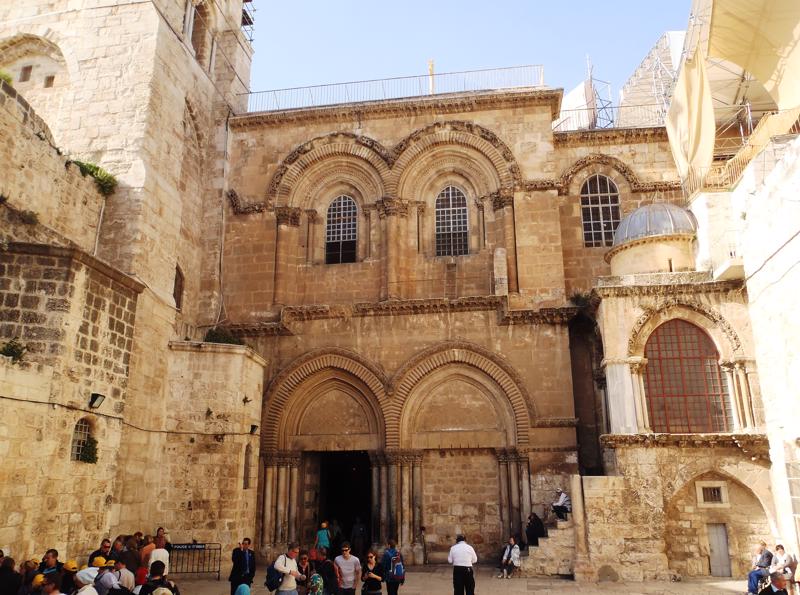
We explored a little (see picture of one small chapel below) but passed the small chapel that is one of the principal devotional areas in the church. That is the chapel above the hole in which the base of the cross was inserted. We passed it by because we were going to have Mass on Sunday in the adjacent chapel so we would be able to see it then. We got in line to see the space where Jesus was laid. An hour and half later, we got there. There is limited access, less than a dozen people at a time can fit in the space, so it took us a long while to work our way to the front of the line.
Next was lunch in a street cafe close to the church. I had a pizza, my first meal in a day and a half. It was pretty good. Pita bread was the base, topped with just a little tomato sauce and a lot of really sharp cheese. Even though it was a significant event in my day, I decided against taking a picture of the pizza.
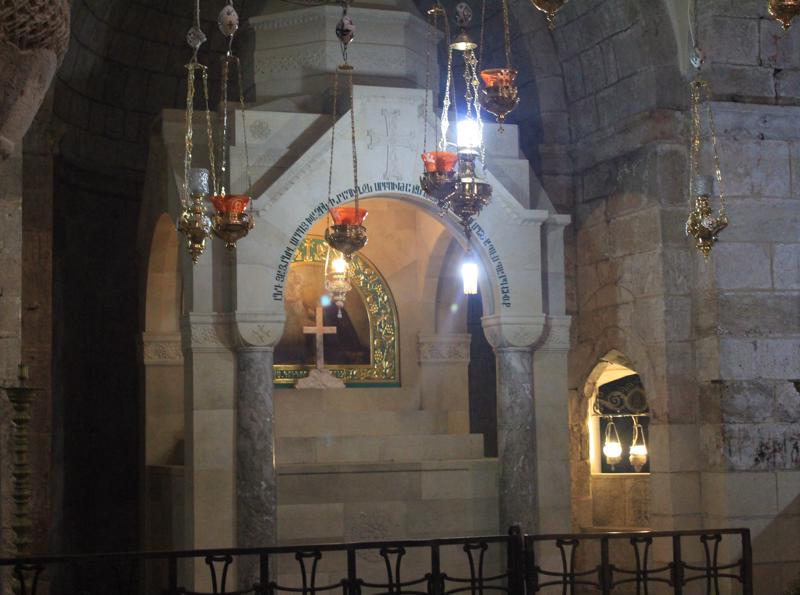
In the afternoon we went to the Wailing Wall. Although the Hacheys and I had seen it on our first day in Jerusalem, we didn't approach it then. This time I had written a short prayer and inserted it between some stones in the wall. There were a great many such pieces of paper and, I understand, they are removed and burned only once a year.
We then got on our bus and went to Mount Zion to the place where the Upper Room was supposed to be located. It is outside the City walls today and was also outside the walls in Jesus's time. The structure on that spot is some ten centuries old, but all that is there is a large, empty space. Close by is the Church of St. Peter in Gallicantu. The church takes its name from the Latin word "Gallicantu", meaning cock's-crow and was built to commemorate Peter's triple rejection of Jesus. Since Peter rejected Jesus in Caiaphas's courtyard, this site was also where Jesus had His first trial. Under the church is a dungeon where Jesus may have been kept overnight. Our final stop was the Dormition Abbey, another spot where Mary may have died (see monument below).
We returned to the Dan Hotel, and everyone readied themselves for
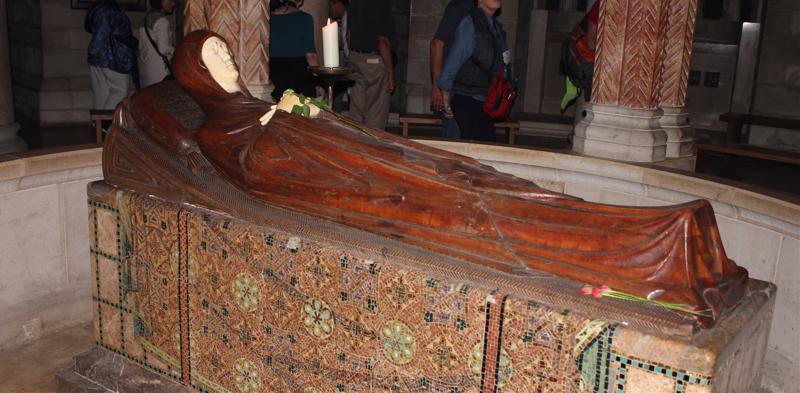
the special Middle Eastern dinner party except me. The pizza I had at mid-day was enough for me. I didn't want to risk a setback by eating too much, too soon so I stayed behind.
Accommodations: Dan Jerusalem Hotel
1.
Day One: Depart the USA
2.
Day Two: Arrive Tel Aviv & Bethlehem
3.
Day Three: Jerusalem
4.
Day Four: Places Near Bethlehem
5.
Day Five: Bethlehem
6.
Day Six: Jerusalem Again
7.
Day Seven: Jerusalem to Jordan & Petra
8.
Day Eight: Petra & Amman
9.
Day Nine: Amman to the Sea of Galilee
10.
Day Ten: Galilee
11.
Day Eleven: Tiberias to Tel Aviv
12.
Day Twelve: Return Home
13.
Post-Trip Reflections
Share your travel adventures like this!
Create your own travel blog in one step
Share with friends and family to follow your journey
Easy set up, no technical knowledge needed and unlimited storage!